forests
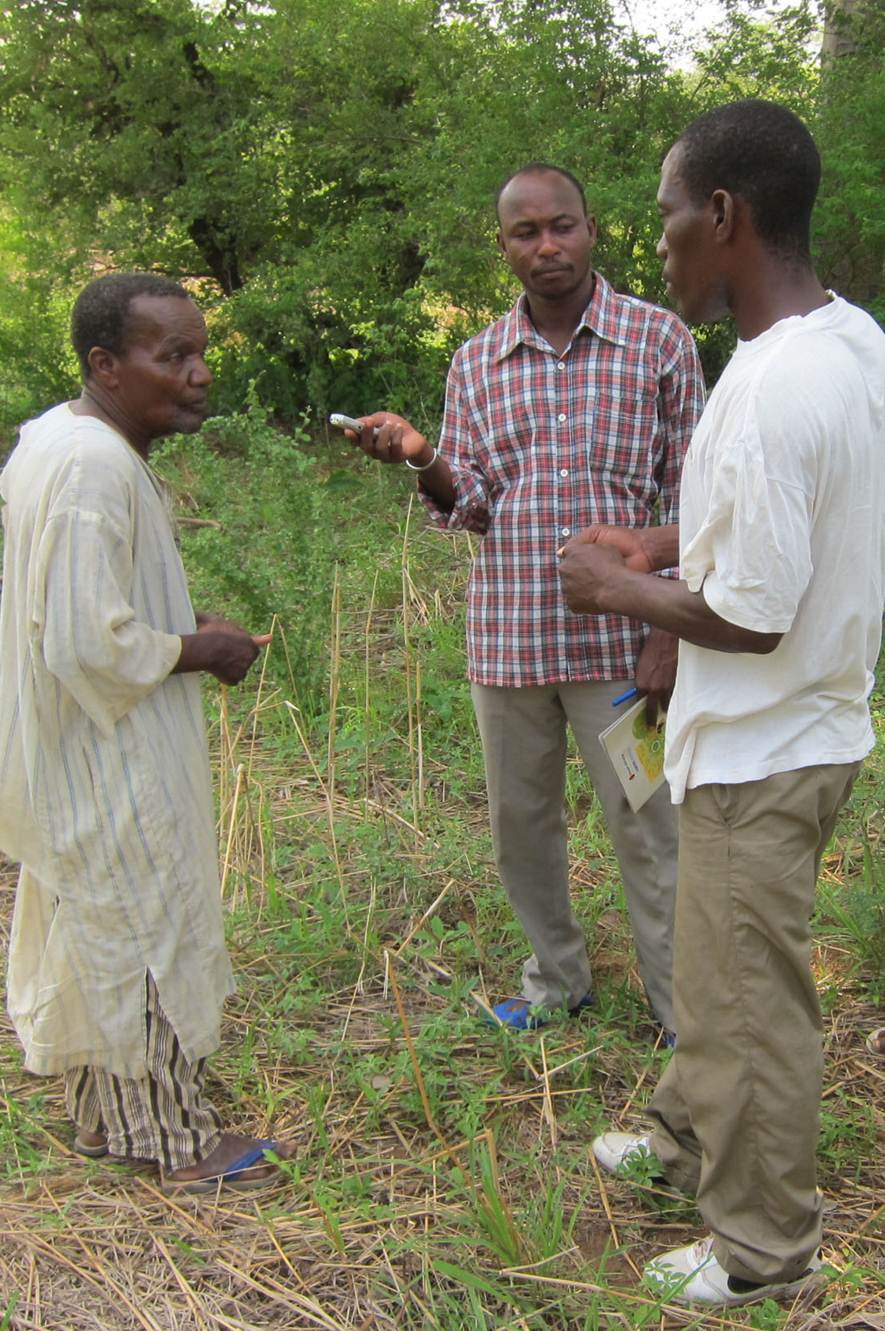
Share
Related Links
A New Survey Tool Promises to Raise the Profile of Forests in National Development Agendas
Poverty-Forests Linkages Toolkit
Improving the Forests Database to Support Sustainable Forest Management
Launch of the sourcebook on national socioeconomic surveys in forestry
External Related Links
Seeing the forests and the trees
National socioeconomic surveys in forestry
Launching the sourcebook on national socioeconomic surveys in forestry
Socioeconomic Benefits of Forests
Authors/Partners
The World Bank, PROFOR, FAO
Building National-Scale Evidence on the Contribution of Forests to Household Welfare: A Forestry Module for Living Standards Measurement Surveys
CHALLENGE
Forests and trees in rural landscapes contribute to human wellbeing in a variety of ways. They provide a range of goods—from fruit to timber, fodder to firewood—and services such as pollination, hydrological regulation, and carbon sequestration that support the livelihoods of millions of people. Despite these contributions and growing recognition of the importance of landscape approaches, forests and trees often remain peripheral in wider development policy discussions. Part of the reason for this marginalization is that developing country decision-makers and planners lack the most basic information about the role and importance of the forestry sector to their national economies. Researchers, advocates, and policymakers alike increasingly recognize that a variety of assets and activities beyond agriculture underpin rural livelihoods, but the picture is incomplete in many circumstances without reliable national-scale data on the contribution of forests and trees.
Comparative research in a variety of developing country settings demonstrates the important contribution that forests can play in mitigating and reducing poverty (see, e.g., recent PROFOR and CIFOR studies). However, available evidence is primarily site-specific, and it is not clear whether results can be extrapolated to the national level. The absence of national-scale evidence on forests-poverty linkages impedes holistic understanding of the role forests can play in providing pathways out of poverty and the development of policies to achieve sustainable reductions in poverty and inequality. Lack of such data also limits capacity to establish adequate baselines, track changes over time, and assess the impact of forest-related investments on poverty.
APPROACH
This activity will help address this knowledge gap by developing a forestry module and sourcebook on its use in the context of the Living Standards Measurement Study (LSMS), LSMS-Integrated Surveys on Agriculture (LSMS-ISA) and other similar national survey instruments. The objective of this activity is to mainstream the collection of national scale data on the contribution of the forestry sector to household welfare by developing and disseminating the forestry module and sourcebook. In addition to PROFOR and LSMS, this activity is a collaboration of the FAO Forestry Department, the Poverty and Environment Network (PEN), coordinated by the Center for International Forestry Research (CIFOR), the International Forestry Resources and Institutions (IFRI) research network, and the University of Copenhagen.
RESULTS
The main output of this activity is the sourcebook ‘’National socioeconomic surveys in forestry: guidance and survey modules for measuring the multiple roles of forests in household welfare and livelihoods." Field-testing was successfully carried out in Tanzania (financed by PROFOR) and Indonesia (financed by CIFOR). Based on the results of these field tests, the module and sourcebook were revised and finalized. The outputs were disseminated at the World Forestry Congress (September 2015) and at the FAO during the International Conference on Agricultural Statistics (October 2016), targeting national statistical agencies, forestry departments, and related agencies.
The original goal of this activity was to mainstream the use of national-scale data on the contribution of forests to household welfare. This work has already contributed to numerous other activities, including on understanding forests’ contribution to poverty reduction; a national survey of about 2,000 households in Turkey as part of the World Bank's dialogue with the government on forest policy; and ongoing forest and poverty work in Armenia and Georgia. In addition, the LSMS-ISA continues pushing for the adoption of the forestry module in different countries, with support from PROFOR. Engagement has started with about 8 countries, with a target of having 3-5 countries using the tool by FY19. A shorter version of the forestry module is also being promoted, so that countries can undertake initial data inquiries to assess whether there is demonstrated need for rolling out the forestry module at the national level (For instance, this was carried out as part of the 2017 Household Budget Survey in Sao Tome and Principe.)
While data is still currently being collected, initial findings from the ongoing work in Liberia clearly illustrate the heavy reliance of households on forest and wild products. These findings are expected to raise a significant amount of interest amongst stakeholders. A BBL is planned to showcase the preliminary results and implementation experience. The findings from Armenia will equip decisionmakers with evidence on the linkages between forestry reliance, energy use, and poverty, thereby enabling improvements in both environmental and social outcomes via evidence-based policy design. Similarly, further promotion of a short forestry module, following lessons learned from the Sao Tome and Principe experience, could increase the geographic coverage and frequency of data on forestry usage leading to increased knowledge and evidence for policy-making.
While it is early in the process to articulate achievements in terms of influence on policies and investments, this activity has achieved the following:
- demonstrated proof of the application concept of the forestry module in the context of national-level LSMS survey applications;
- developed and acted upon the interest of counterparts in developing these applications in new countries;
- developed and applied a community-level module of the survey design to collect, among other forest-related data, gender-specific data;
- developed a CAPI application of the survey module, to be further developed for wider dissemination.
In 2019, PROFOR provided additional support to implement the modules in the following countries:
- Liberia, as part of the Liberia National Household Forestry Survey (NHFS) implemented by the Liberia Institute of Statistics and Geo-Information Services (LISGIS).
- Armenia. The activity team provided sampling and questionnaire design input for a survey on forestry, poverty, and energy.
- São Tomé and Príncipe. A subset of the forestry module was included in the 2017 Household Budget Survey, intended to provide preliminary data on forest dependency and gauge the potential for future inclusion of the full module.
- Turkey
- Georgia
For stories and updates on related activities, follow us on twitter and facebook , or subscribe to our mailing list for regular updates.
Author : The World Bank, PROFOR, FAO
Last Updated : 06-16-2024
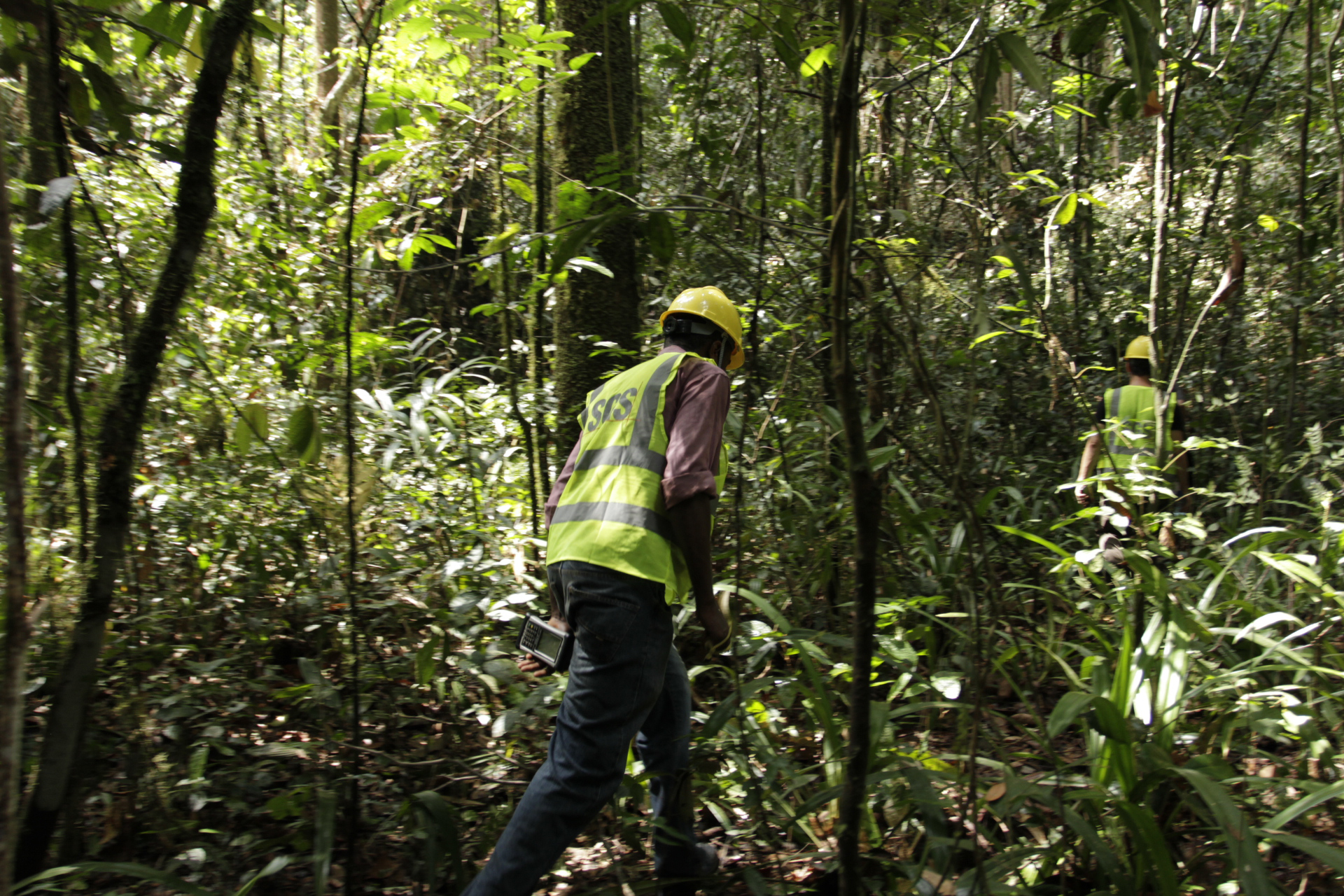
Share
Inside Liberia`s forest sector

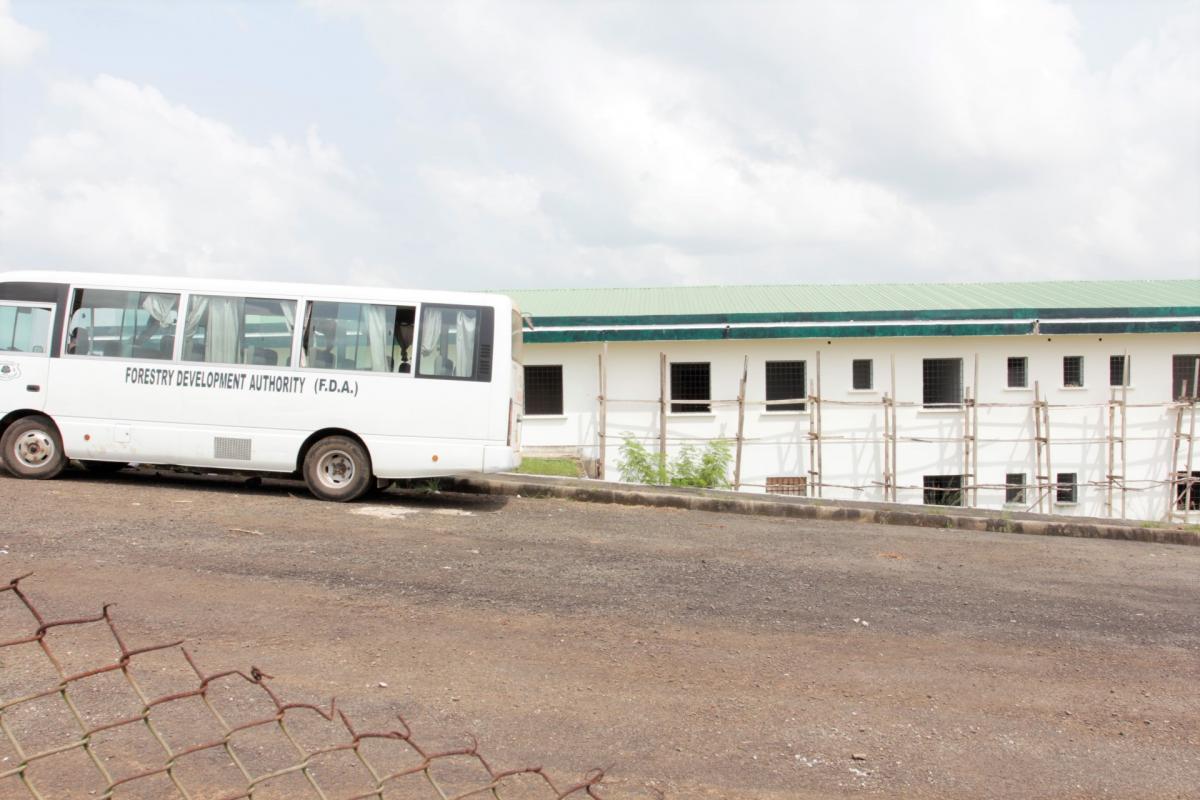 The Program on Forests (PROFOR) conducted an institutional capacity assessment survey of the FDA to generate granular level data on the inner workings of the agency in order to position Liberia`s forest sector as an engine for economic growth. 438 FDA employees, or approximately 82% of the staff were interviewed on their experiences and perceptions on the FDA`s operations including human resource management.
The Program on Forests (PROFOR) conducted an institutional capacity assessment survey of the FDA to generate granular level data on the inner workings of the agency in order to position Liberia`s forest sector as an engine for economic growth. 438 FDA employees, or approximately 82% of the staff were interviewed on their experiences and perceptions on the FDA`s operations including human resource management.“The FDA plays a pivotal role in Liberia`s sustainable forest management but faces serious operational challenges especially in human resource management. Improving governance of the forest sector presents significant challenges and requires continuous efforts and long-term engagement. This survey identifies the most necessary interventions and provides a baseline measure of civil service productivity in FDA against which progress can be measured as these interventions get implemented.” Zahid Hasnain, Senior Public Sector Specialist at the World Bank explained.
For stories and updates on related activities, follow us on twitter and facebook , or subscribe to our mailing list for regular updates.
Last Updated : 06-16-2024
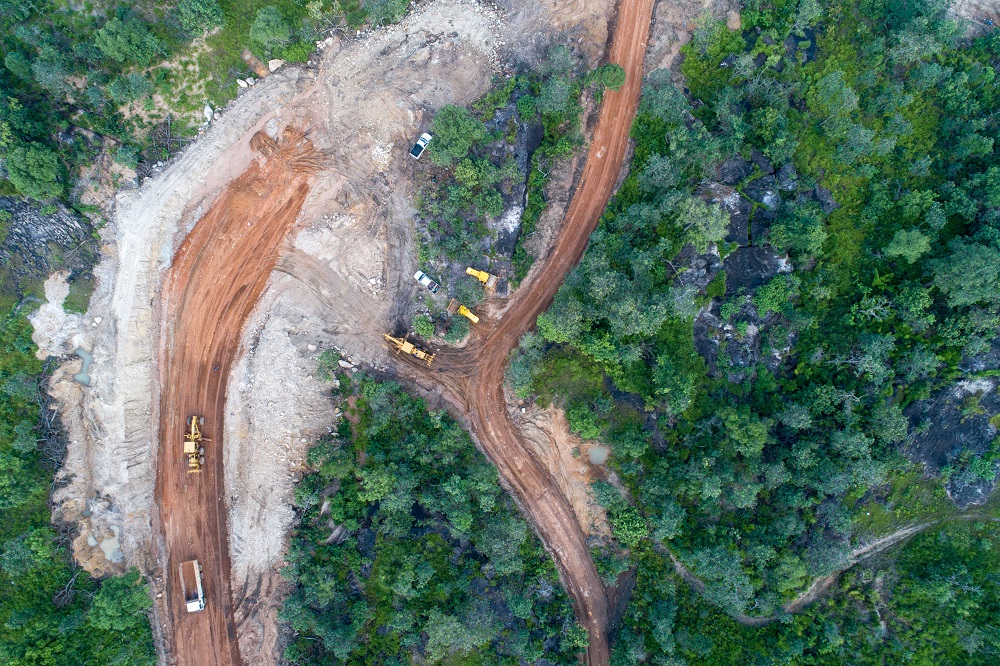
A low-carbon future must protect the world’s forests

The shift to a low-carbon future that includes clean technology such as solar panels, wind turbines, electric vehicles and batteries will require a lot of minerals. In fact, experts predict that between now and 2050 we will need more minerals than have been produced over the past 100 years. This mineral-intensive future has implications for our forests, vital to mitigate global warming. A climate-smart mining approach that protects the world’s forests is essential to reduce carbon emissions and fight climate change. Currently about 1,500 large-scale mines in the world are in tropical forests and a further 1,800 are under development or currently non-operational. More than half of these large-scale forest mines are in low- or lower-middle-income countries.
Forests provide an important carbon sink for mitigating climate change. According to the World Resources Institute, if tropical forests combined were a country, deforestation would rank third in carbon dioxide–equivalent emissions, behind China and the United States. Generically speaking, forest loss is driven by economic activity, mainly commercial and subsistence agriculture. Yet, mining plays an important, though less understood role, accounting for an estimated 7 percent of total forest loss. As the future of our planet hinges on tenths of degrees Celsius, 7 percent may well make the difference.
At a national level, mining is contributing to emissions from forest loss in numerous countries and is a dominant cause of deforestation in some. For example, in Suriname, mining is responsible for 73 percent of total deforestation, with the majority attributed to artisanal and small-scale mining (ASM) for gold.
With so much at stake, the World Bank has developed what we call a forest-smart approach to mining – ensuring that this increased need for metals and minerals will not be at the expense of forests. Thus a Climate-Smart Mining approach also needs to be Forest-Smart. Three new reports released today offer solutions to address this challenge.
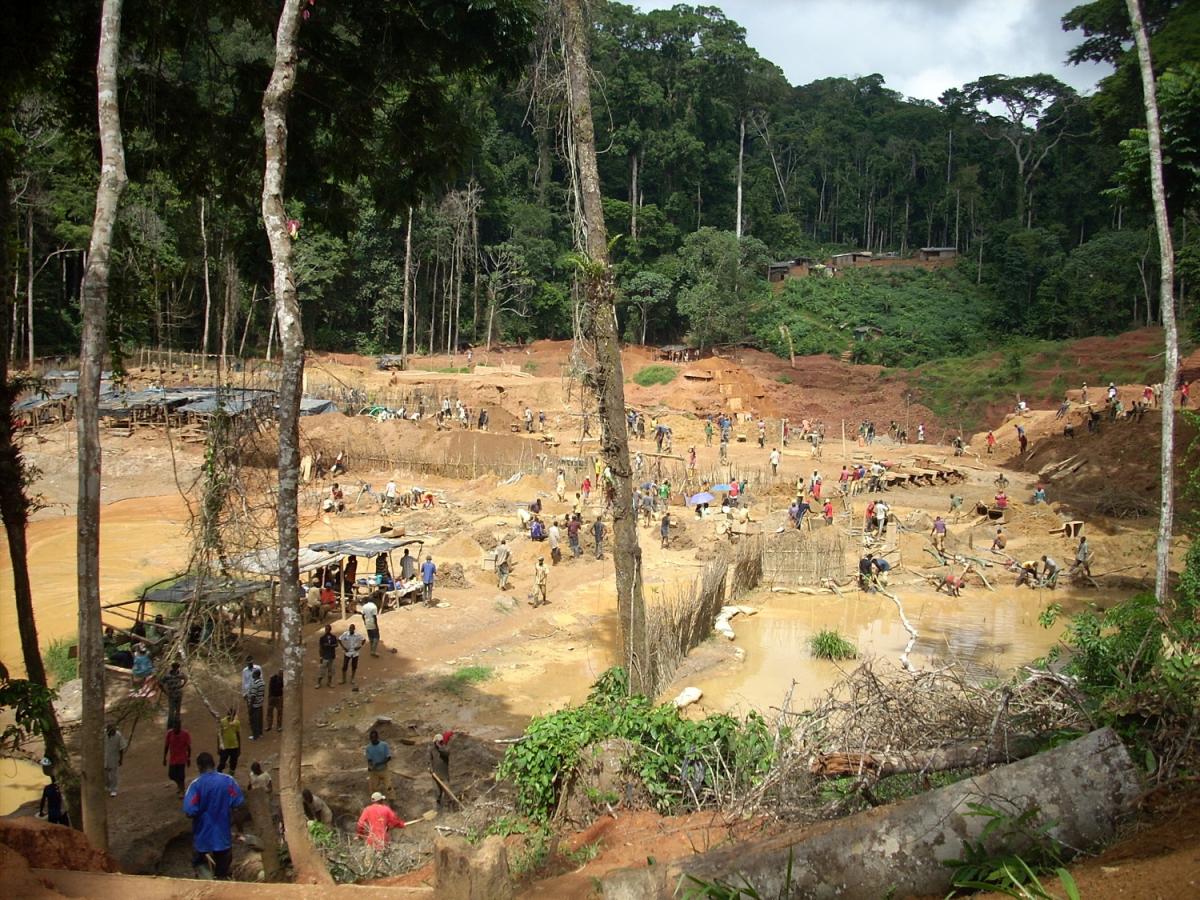
So, what mining takes place in forests? Many different minerals are mined in forests, with gold, iron ore, and copper most commonly mined by large-scale operators in forests. Bauxite, titanium, and nickel are the most reliant on forest-based mines, as the ores that contain them are mostly found in forest areas. All these minerals are crucial components of low-carbon technologies as well as for cell-phones and computers.
Importantly, it isn’t principally the mine itself that causes deforestation. Our research shows that a mine is often surrounded by large-scale forest losses in areas outside the mining permit area, with notable spikes in deforestation when the mines are first established. This forest loss is largely the result of new roads, railways, ports and other infrastructure built to transport extracted minerals. In addition, the development of large-scale mines in previously uninhabited or inaccessible areas attracts people looking for new economic opportunities. The settlements they establish drive forest loss due to firewood demand, wildlife poaching, agriculture expansion and ASM activities.
To address this deforestation, a forest-smart approach to mining requires strong governance to manage the development and impacts of the mining sector, protect forests on a landscape level, and recognize and protect local community tenure and rights. It also requires responsible corporate behaviour, empowered communities, and engaged civil society stakeholders.
With this in mind, we analyzed almost 30 case studies of both artisanal and small-scale mines as well as large-scale mining operations to identify best practices that can improve forest outcomes and bad practices to be avoided. The result is a large number of practical examples and a set of 14 forest-smart mining principles.
Based on our case studies, no single site, operation, company, or country is wholly forest-smart. Yet, our case studies also demonstrate that a variety of countries are implementing forest-smart practices and applying strong policies. One key finding of our work is that political will and coordination between government entities and other stakeholders is crucial for forest-smart outcomes.
In Madagascar, the establishment of coordination platforms between managers of a national park and local authorities helped to develop effective strategies to manage illegal artisanal mining in the park and improve agricultural practices to reduce pressure on forest.
In Ghana, a mining company included community stakeholders as partners in planning, decision making, and implementation to achieve positive outcomes for forests and communities. This ongoing consultation led to communities receiving long-term stakes in the work through secure forest plots. used for sustainably managed small-scale commercial production.
In Zambia, a mining company partnered with the Forestry Department and the Department of National Parks and Wildlife to manage a large forest landscape, including the West Lunga National Park, together with local communities to protect the forest landscape and prevent further deforestation.
Our analysis identified priority countries for applying the forest-smart principles, using the criteria of high forest cover, high economic dependence on mining, a high density of mines in forest areas, and significant greenhouse gas emissions from forest degradation. Countries identified include Guinea, Ecuador, the Democratic Republic of Congo (DRC), Zambia, and Indonesia, countries where the World Bank is active in both forest conservation and mineral sector governance, and thus well positioned to help bring together experts, governments, companies and communities to implement forest-smart mining approaches. By working together, we can utilize the raw materials needed for clean-energy technologies and conserve forests at the same time – protecting the world’s forests, reducing emissions and stepping up to the climate challenge.
This blog by Kirsten Hund and Erik Reed was originally published by The World Bank
For stories and updates on related activities, follow us on twitter and facebook , or subscribe to our mailing list for regular updates.
Last Updated : 06-16-2024
Trees and forests are key to fighting climate change and poverty. So are women
According to WRI's ‘Global Forest Watch’, from 2001 to 2017, 337 million hectares of tropical tree cover was lost globally – an area the size of India.
So, we appear to be losing the battle, if not the war, against tropical deforestation, and missing a key opportunity to tackle climate change (if tropical deforestation were a country, it would rank 3rd in emissions) and reduce poverty. A key question, then, is what can forest sector investors, governments and other actors do differently to reverse these alarming trends?
One way to speed up our efforts is to proactively include the role of women in the design of forest landscape restoration and conservation efforts. It is only recently that people developing forest restoration programs have thought about their impact on women, and the risks of failure that come with ignoring women’s needs and potential contributions.
We know that men and women access, use and manage forests differently, with differing knowledge and roles in the management of forests and use of forest resources. Although there is still limited evidence of the magnitude and breadth of impacts achieved by implementing gender-responsive policies and practices in the forest sector, we are starting to see more evidence that taking into account gender differences could lead to behavioral changes that increase tree cover and improve the livelihoods of the poor.
Considering gender differences in the use of, access to, and benefits from forest landscapes has led to more fair and effective design of interventions and institutional arrangements that have maximized program results and successes in addressing deforestation in many countries.
For example, in Brazil, supporting women’s non-timber forest product (NTFP) microenterprise groups resulted in increased incomes and empowerment, as well as a reduction in deforestation. In India and Nepal, increasing women’s participation in community forest management groups led to improved forest conservation and enhanced livelihoods. In Uganda, a gender-transformative ‘adaptive collaborative management’ approach for communities resulted in tens of thousands of trees being planted by women for the first time both on-farm and in forest reserves, improved food security, and the election of 50% women leaders in forest management groups. In Kenya, the Green Belt Movement launched by Nobel laureate Wangari Maathai, with women’s empowerment at its core, has planted over 51 million trees.
The thought of designing and implementing gender-transformative landscape initiatives of any type (projects, programs, policies, capacity strengthening efforts, etc.) can be daunting for development practitioners or decision makers without experience considering gender. It doesn’t have to be.
A recently released paper from the World Bank’s Program on Forests (PROFOR) examines the types of gender inequalities that exist in forest landscapes, and the gender considerations or actions that many countries are taking to address these gaps. It reviews and synthesizes a wide range of World Bank and partner projects and forest sector investments in different regions.
The PROFOR paper aims to stimulate greater understanding of potential opportunities by providing suggestions for gender-responsive actions that developers and leaders of forest projects, programs and policies can consider. Depending on which forest actor you are, applying and tailoring these suggestions to your context specific circumstances can ensure more effective and equitable impacts:
- A developer or investor in forest landscape projects can consider establishing performance-based contracts with joint spousal signatures for planting and protecting trees on farms, as well as near and inside forests, or including budget line items for gender-targeted NTFP activities.
- Governments, particularly forest-related agencies, can train forest personnel in the collection of sex-disaggregated data and inclusive, participatory engagement and forest landscape management planning processes, or facilitating registration for forest-related programs in easily accessible spaces where women already go (e.g. schools, health care centers).
- Investors, development agencies and private sector actors can find ways in which to make direct payments to women (e.g. via cellphone) for forest restoration and agroforestry activities or supporting rural women’s leadership capacity and strengthening activities.
PROFOR’s paper, along with a guidance note for project designers, provide many more examples of how gender analysis and actions can contribute in forest landscapes and of how this research is already being applied on the ground. For example, the World Bank’s Forest Carbon Partnership Facility (FCPF) includes several countries that are using this tool to design REDD+ readiness and large-scale programs that ensure women are partners in the planning, operation, and deployment of climate finance.
The bottom line is that greater investment in forest landscapes and agroforestry will be critical in efforts to address climate change and rural poverty challenges in many countries. The success of these investments will be enhanced by considering gender-responsive activities and actions when designing and implementing forest landscape projects and programs.
This blog by Patti Kristjanson was originally published by The World Bank
For stories and updates on related activities, follow us on twitter and facebook , or subscribe to our mailing list for regular updates.
Last Updated : 06-16-2024

Counting charcoal trucks by the side of the road in Haiti
Across the world, over 3 billion people cook with solid biomass over traditional stoves resulting in negative impacts on health and the environment. In Latin America this number is around 90 million people.
In this blog, I want to focus on the case of Haiti, where 93 percent of people (2.2 million households) cook with solid fuels and some 80 percent of urban households use charcoal as their primary cooking fuel. This fuel has implications on health – burning charcoal exposes cooks and family members to harmful Indoor Air Pollution (IAP) like PM2.5 and others – and on the environment, especially forests, since charcoal is made from wood.
As far back as the 1970s projections suggested that supplies of wood for charcoal would only be enough to meet increasing demand until the year 2000, based on the logic that a growing urban populations’ demand for more charcoal, and a diminishing forest cover would not permit the continued use of charcoal. And yet, some 40 years later, Haitians continue to produce increasingly larger quantities of charcoal to meet more than three quarters of the urban cooking demand, year after year.
But where is this charcoal coming from? And how does it just keep coming?
A new national research report titled, “Charcoal in Haiti: a National Assessment of Charcoal Production and Consumption Trends”, conducted in Haiti between 2016-2018 by the World Bank, the nonprofit organization J/P HRO and the Haiti Takes Roots Initiative, tackles these questions:
How much charcoal is consumed annually in Port au Prince?
Where in Haiti is charcoal produced?
And is charcoal coming into Haiti from the neighboring Dominican Republic?
Charcoal is primarily consumed by urban populations without access to lower-cost fuelwood from wooded areas. The research tracks the actual volume of charcoal traveling into Port au Prince over different periods in 2017.
Port au Prince—with a population of over 2.6 million, or approximately one-fourth of Haiti’s entire population and dwarfing the next largest urban centers of Gonaives (356,000) and Cap-Haitien (274,000—is the largest charcoal consumer in the country.
Using Port au Prince as a hub, this research uses a “count” methodology, whereby enumerators positioned every major road, intersection, and agricultural feeder-road count and classify passing charcoal trucks.
During three time periods covering low season and high season of charcoal production (August, October and December) 69 enumerators were set-up at 23 different roadside stations for continuous 24-hour monitoring to count passing trucks. During the data collection, these enumerators logged a total of 384 hours of observations totaling 10,404 unique enumerations of charcoal vehicles heading toward the capital.
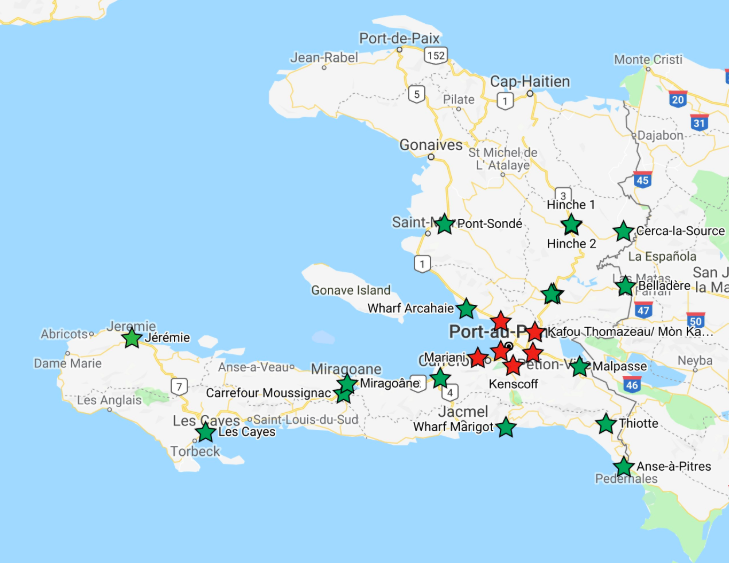
Geographical Dispersion of 23 Enumeration Sites along feeder roads
Using a sensitivity analysis and taking the mid-range estimates of the data, the research finds that approximately 433,000 metric tons of charcoal enter Port au Prince annually (or 946,500 metric tons of charcoal consumed nation-wide).
That is in fact equivalent in weight to over 90,000 medium-sized African elephants!
Considering the price of charcoal, these astounding flows place the product as the second-largest agricultural value-chain in in Haiti, second only to mangoes.
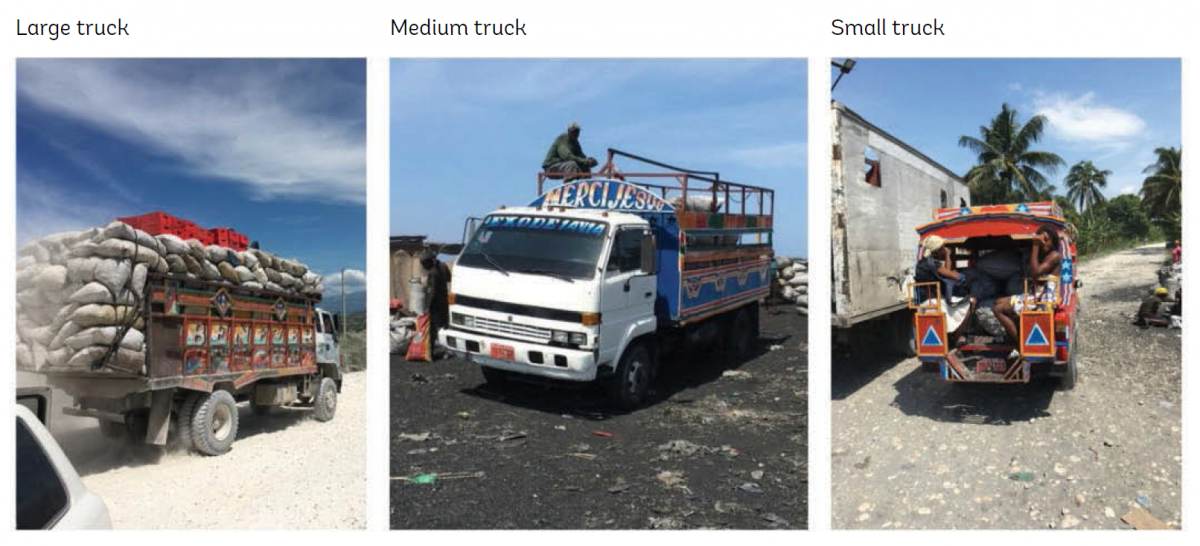
The research also finds – contrary to some popular perceptions – that very little of this charcoal is coming over from the Dominican Republic, estimating that only 2.28 percent of the total charcoal consumed in Port au Prince comes from its neighbor.
Renewable biomass
The report underscores 2014 evaluation of forest cover estimates for Haiti showing that forest coverage in Haiti is significantly higher than previously believed – covering approximately 30 percent of the land surface.
The convergence of these three things – over 400,000 metric tons of charcoal flowing into Port au Prince, nearly all of which originates in Haiti, and a persistence of a forest cover equating to nearly a 3rd of the surface area of the island – suggests that at least some portion of the charcoal presently produced in Haiti is made with renewable biomass resources. 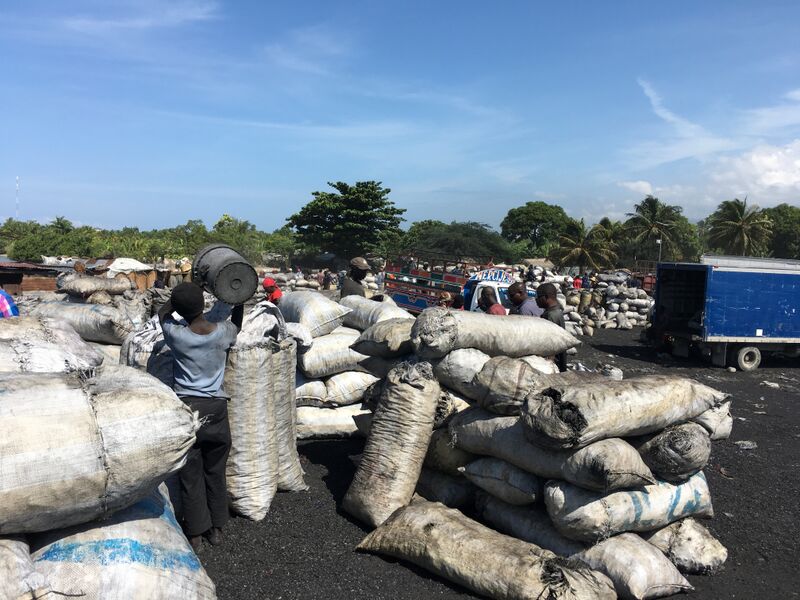
This fact alone changes the dialogue around charcoal. Typically thought of as the major driver of deforestation in Haiti, the production of charcoal from renewable biomass resources means that charcoal production in Haiti is, at least in part, sustainable. Changing the narrative presents opportunities for investments in agriculture and natural resource management to improve planning and practices for charcoal value-chains.
Charcoal remains an undesirable cooking fuel choice for health reasons. However, despite targeted investments in the cooking fuel sector, Haiti’s movement up the fuel ladder is happening slowly, meaning it is unlikely that Haiti will reduce its reliance on charcoal anytime in the near future. Investments in improving the sustainability of charcoal will help to minimize the impact on the environment while Haiti strives for cleaner, better fuels to meet the increasing demand of its growing population.
Financing for this study was provided by the Program on Forests (PROFOR).
This blog by Katie Kennedy Freeman was originally published by The World Bank
For stories and updates on related activities, follow us on twitter and facebook , or subscribe to our mailing list for regular updates.
Last Updated : 06-16-2024
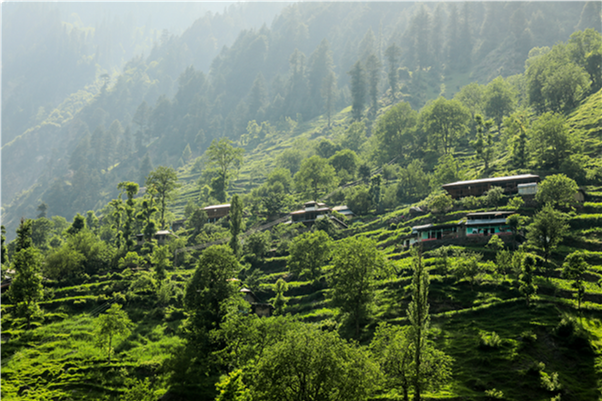
Making a case for forest investments in Pakistan
For stories and updates on related activities, follow us on twitter and facebook , or subscribe to our mailing list for regular updates.
Last Updated : 06-16-2024
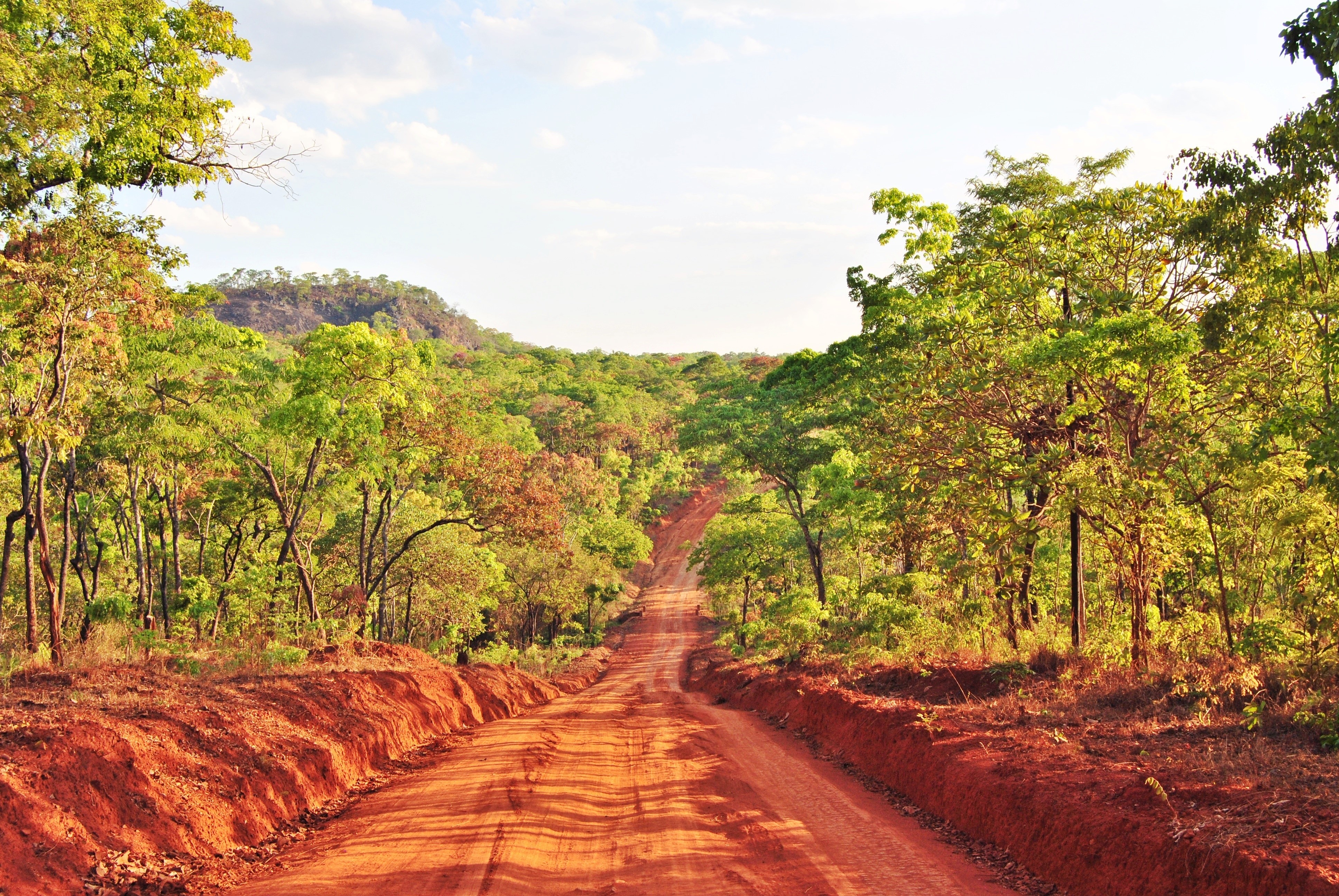
Share
Related Links
Forest Resilience for the Southern Amazon: Managing the Agricultural Frontier
Promoting green growth in Colombia: The potential for commercial reforestation
How Productive Forests Can Help Foster Green Growth and Mitigate Climate Change
Cutting Deforestation Out of the Cocoa Supply Chain
In Mozambique, Government, Conservationists and Private Sector Come Together to Protect Biodiversity
Think Big: Landscapes rich with trees deliver multiple benefits
When thinking of forests, don't forget the value of trees
Ecological restoration, critical for poverty reduction
New tool to deliver swifter, better data on forests-poverty linkages
In the Philippines, forest investments offer significant returns
Being inspired by gender actions in forest landscapes around the world
Land tenure for forest peoples, part of the solution for sustainable development
Resolving forest tenure is key to promoting sustainable development and human rights
Does mining need a forest-smart approach? You bet it does!
Forest-smart strategies are taking off
With greater forest knowledge, sustainability is within reach - if we act quickly
For forests, 2017 could be seen as a tale of discouraging superlatives. We learned that global forest loss is at a record high since data collection started in 2000. Damage from wildfires in the United States was the costliest in the country’s history. And in Brazil, September 2017 saw more forest fires than any other month on record.
There is no doubt that the world’s forests are – like many other ecosystems – approaching a dangerous tipping point. Some of PROFOR’s own analysis draws similar conclusions: for instance, an upcoming report suggests that the southern Amazon may soon be caught up in a cycle of droughts and fires that render the forest into a net emitter of carbon. These and other threats to forests could not only have devastating ecological and climatic impacts, but are likely to profoundly affect the wellbeing of communities who depend on forests and the services that they provide.
Despite this gloomy news, it is encouraging to see an ever-growing body of knowledge on the economic, social and environmental contributions made by forests. More positive still is how much we are learning about the many opportunities for expanding the role of forests to make real development gains.
For example, PROFOR-supported research finds that forest-rich Colombia could significantly boost revenues and jobs by investing in commercial plantations, which would also help protect natural forests and help the country meet its pledge to reduce greenhouse emissions. Another report, co-funded by the Climate Investment Funds, highlights how six countries could sequester more than 150 million tons of CO2e (carbon dioxide equivalent) by 2030 by supporting forest restoration and the increased production and use of wood products.
PROFOR and partners also made a business case for moving toward deforestation-free production models in the cocoa industry and set out a set of principles to help advance that goal. And where the impact of commercial activities on forests just can’t be avoided or sufficiently minimized, PROFOR is guiding countries like mineral-rich Mozambique on the use of “last resort” options that can still contribute to biodiversity preservation.
Importantly, we know more about the value not just of forests, but also of forested landscapes. A study of tree-based systems in Rwanda and Malawi recommends promoting trees on farms instead of subsidizing fertilizer - a move that could reduce government spending by millions of dollars every year. These and other ecological restoration processes can - and need to - be massively scaled up to maintain important safety nets and help communities move out of poverty.
PROFOR-funded resources like the Forest-SWIFT survey tool are building understanding for the ways in which poor communities depend on forests, and helping to develop targeted programs that simultaneously enhance ecosystem benefits and conserve habitats. Another PROFOR-supported study in the Philippines finds that forest investments can be highly cost-effective, especially when adapting to climate change.
But these gains won’t happen on their own. They require evidence-based investments that consider a whole raft of ethical and governance factors, including the meaningful participation of men and women in forest management decisions. Another crucial consideration – but one that is often considered too risky - is the issue of land rights for forest peoples. A PROFOR book on tenure systems in six Latin American countries aims to advance the discussion of how strong community rights can promote sustainable forest management as well as economic development.
Finally, there has been heartening progress in understanding the role of forests as part of many non-traditional sectors like disaster risk management, agriculture, and energy. PROFOR has been a staunch advocate of these “forest-smart” solutions, and early results are highlighting the importance of this approach. A PROFOR activity on forest-smart mining, for example, revealed that a substantial number of the world’s mines are located in forests. We hope 2018 will see the continued growth of forest-smart strategies, within our own work and that of our partners.
While the year ahead presents some daunting challenges for preserving and protecting forests, and the urgency is greater than ever, we also have better knowledge and tools at our disposal. So, let’s get to work. Won’t you join us?
For stories and updates on related activities, follow us on twitter and facebook , or subscribe to our mailing list for regular updates.
Last Updated : 06-16-2024
In the Philippines, forest investments offer significant returns
It’s well understood that forests are worth more than the sum of their trees. As an ecosystem, forests provide an astonishing array of benefits, from the more obvious ones like timber, fruits and nuts, to the intangible ones like maintaining reliable flows of clean water. But how much are these benefits actually worth? And are forests really so much better at providing these services than, say, human-engineered technology?
According to a new study in the Philippines, reforestation and forest rehabilitation may truly be the most cost-effective option for producing valuable ecosystem services that many people depend on – especially given the uncertainties brought on by climate change.
With funding from the Program on Forests (PROFOR) and technical support from the World Bank, the Government of the Philippines studied three different areas to assess the value of certain “invisible” forest-derived benefits. The research found that healthy forests help reduce risks to climate variability by providing high-quality ecosystem services that contribute to more resilient communities.
For instance, the study showed that in the Upper Marikina River Basin – a degraded watershed upstream from Manila, where most inhabitants live below the poverty line - higher forest cover results in 149 to 167 percent higher water yields during the driest months of the year, ensuring a more reliable water supply during times of scarcity. Meanwhile, during the wettest months, forests can reduce the volume of floodwater in the watershed by 27 to 47 percent. Forests also stabilize hillsides and mountainsides in the region by decreasing the risk of soil erosion by 68 to 99 percent per hectare – helping reduce the impacts of natural hazards like flooding and landslides.
“These services are worth billions of pesos,” emphasized Eugene Soyosa, Economist at the Philippines Forest Management Bureau. “Maintaining forests has a much lower cost than if you would build check dams or other erosion control measures.”
Crucially from a sustainable development perspective, forest ecosystem services are integral to the well-being of poor communities in the Philippines. According to the findings at one pilot site, people obtain about 7 percent of their annual cash income from selling forest resources like bamboo, charcoal, fish, and bush meat.
“Poor households are very dependent on forests, especially for water provisioning services” said Maurice Andres Rawlins, Natural Resource Management Specialist at the World Bank and a lead author of the study. “If these services were lost and people had to pay for them, it could certainly set back poverty reduction gains.”
“In the pilot site of Upper Marikina, forests have been degraded for charcoal-making and the water supply is decreasing; at other sites, the siltation is very pronounced,” explained Soyosa. “When we first talked to communities, they perceive the idea of ecosystem services as too technical. But as the conversation moves on, it turns out that they know a lot about these benefits, and are being heavily impacted by the loss.”
Forest ecosystem services become more important as the impacts of climate change intensify. The Philippines - being an archipelagic country that is naturally vulnerable to typhoons, earthquakes and storm surges– also ranks among the top 5 countries most affected by climate change. According to projections, all areas of the Philippines will get warmer, contributing to more frequent extreme weather events. Dry seasons will become drier, and wet seasons wetter. This study confirms that forests provide services that make communities more resilient to climate change shocks, including acting as a safety net against poverty.
The Government of the Philippines is already trying to reverse trends of severe deforestation and forest degradation across the country, and has been working on the valuation of ecosystem services with help from the World Bank-led Wealth Accounting and the Valuation of Ecosystem Services (WAVES) Global Partnership. This work is motivated by the recognition that documenting economic values of forest resources can help make forest investments more attractive, and thus improve the livelihoods of poor upland communities.
“The Philippines is committed to regreening,” said Rawlins. “They don’t want to just plant forests where there are none, but to undertake more strategic thinking about which areas to prioritize, and what kind of trees to plant. That’s where measuring specific ecosystem services results is so important. The question now is, ‘How do we mainstream these processes into planning?’ The ability of the government to include this work in their regular processes is the true sign of success.”
Findings of the study are intended to guide the Philippines’ National Greening Program by including forest ecosystem services into land use planning processes. Results have also shaped the indicators in the country’s Forest Investment Road Map (FIRM), which is the government’s strategy for accelerating sustainable economic growth in the wood industry through private sector investment. The FIRM, in turn, is consistent with the Philippines Master Plan for Climate Change-Resilient Forestry Development, which aims to promote the development of forest plantations and increase the participation of the private sector, local government units, and organized upland communities.
“In the Philippines we have not yet established a national database on forest ecosystem services in terms of inputs into policies and programs,” said Larlyn Faith Aggabao, Senior Forest Management Specialist at the Forest Management Bureau. “This study is a useful start to institutionalizing and formulating a coordinated effort among different agencies for data collection, data sharing, and analysis. This information would provide significant inputs to forestry plans because there are trade-offs to any policy, and these need to be managed.”
(Photo credit: Gordon Bernard Ramos Ignacio)
For stories and updates on related activities, follow us on twitter and facebook , or subscribe to our mailing list for regular updates.
Last Updated : 06-16-2024

Ecological restoration, critical for poverty reduction
By Joaquim Levy, World Bank Group Managing Director and Chief Financial Officer
Why is ecological restoration so critical to the World Bank’s mission of reducing poverty and boosting shared prosperity? Quite simply, because environmental degradation is devastating to the most vulnerable communities![]() and perpetuates poverty around the world.
and perpetuates poverty around the world.
Some 42 percent of the world’s poorest live on land that is classified as degraded. The situation becomes worse every year, as 24 billion tons of fertile soil are eroded, and drought threatens to turn 12 million hectares of land into desert.
The costs associated with environmental degradation can be compared to the impacts of a natural disaster.![]() In Indonesia, for example, a few months of peat fires created more economic damage than the Tsunami in Aceh.
In Indonesia, for example, a few months of peat fires created more economic damage than the Tsunami in Aceh.
Thankfully, there is still time to reverse this type of harm. Worldwide, about two billion hectares of degraded forest land could be restored, creating functional, productive ecosystems that can boost sustainable development. Governments and other stakeholders are motivated to make this happen – nothing was clearer from my participation in the 7th World Conference on Ecological Restoration, last week in Foz do Iguaçu, Brazil.
So how do we take the next step and make large-scale environmental restoration a reality? We need to keep a few key principles in mind:
First, we need to think of a new forest economy. Environmental restoration at the scale we need requires going beyond conservation.![]() It means integrating timber and food production, as well as energy and disaster risk management, particularly when it comes to water resources. We need to look at countries like Austria, Germany and South Korea, which have built entire rural economies on high-tech forest value chains that are not only highly productive, but also ecologically meaningful. The World Bank has supported this approach in several places, including China, where an erosion control project returned the devastated Loess Plateau to a thriving landscape that supports sustainable agriculture and the livelihoods of 2.5 million people.
It means integrating timber and food production, as well as energy and disaster risk management, particularly when it comes to water resources. We need to look at countries like Austria, Germany and South Korea, which have built entire rural economies on high-tech forest value chains that are not only highly productive, but also ecologically meaningful. The World Bank has supported this approach in several places, including China, where an erosion control project returned the devastated Loess Plateau to a thriving landscape that supports sustainable agriculture and the livelihoods of 2.5 million people.
Second, we need to find efficient, low-cost restoration solutions that can be brought to scale. This means investing in rigorously tested scientific methods, because we cannot afford to make large-scale mistakes. It also requires customized solutions capable of meeting the various restoration challenges, from evaluating whether native species are always the best choice, to considering a range of time horizons. Brazil’s commercial restoration sector is a leader in this field, with cooperative, inter-company research contributing to the success of the commercial plantation sector.
Third, we need to ensure legal rights for forests. There can be no thriving forest economy without sound tenure rights, including for Indigenous and traditional peoples. Some countries are making progress on this front. In Nicaragua, for instance, all ancestral territories of Indigenous Peoples in the Caribbean Region are now mapped and titled thanks to legal, policy, and institutional reforms that began 15 years ago, with World Bank support.
Fourth, we need to better understand the value of our forest services. Adopting natural wealth accounting that values assets such as land, forests, and minerals as a companion to GDP would help state the economic cost of degradation and the benefits of restoration. Armed with such information, Ministers of Finance may become restoration champions, and governments would have the tools to develop a forest-smart approach that works across economic sectors and at the right scale. Consider the case of Costa Rica: by establishing forest accounts, the government documented that forests contributed close to 10 times more to GDP than was previously thought.
The last missing link is financing. We need to consider all levels of financing, starting with small and medium-sized enterprises. Forest development and integrated agriculture need to be made attractive to entrepreneurs![]() , including women and the young.
, including women and the young.
In addition, tax and transfer systems must recognize the importance of environmental services. Providing strong governance and guidance on the use of environment compensation fees, such as Brazil’s “compensaçao ambiental,” ought to be a priority. Local solutions need to be discussed everywhere, along with international incentive systems.
Finally, when adequately-funded and accountable research starts to generate the right technology, sizeable financial resources will flow to restoration.
To recap: ecosystem restoration is critical for sustainable development and poverty alleviation![]() ; there are significant opportunities for putting these approaches into practice; and we have a solid understanding of the core principles that contribute to successful restoration efforts.
; there are significant opportunities for putting these approaches into practice; and we have a solid understanding of the core principles that contribute to successful restoration efforts.
At the World Bank Group, we stand ready to support countries’ restoration efforts through our financing tools and partnership programs like the Program on Forests (PROFOR). Together, our efforts can have a transformative impact on improving the lives of the poorest and benefitting the environment.
For stories and updates on related activities, follow us on twitter and facebook , or subscribe to our mailing list for regular updates.
Last Updated : 06-16-2024
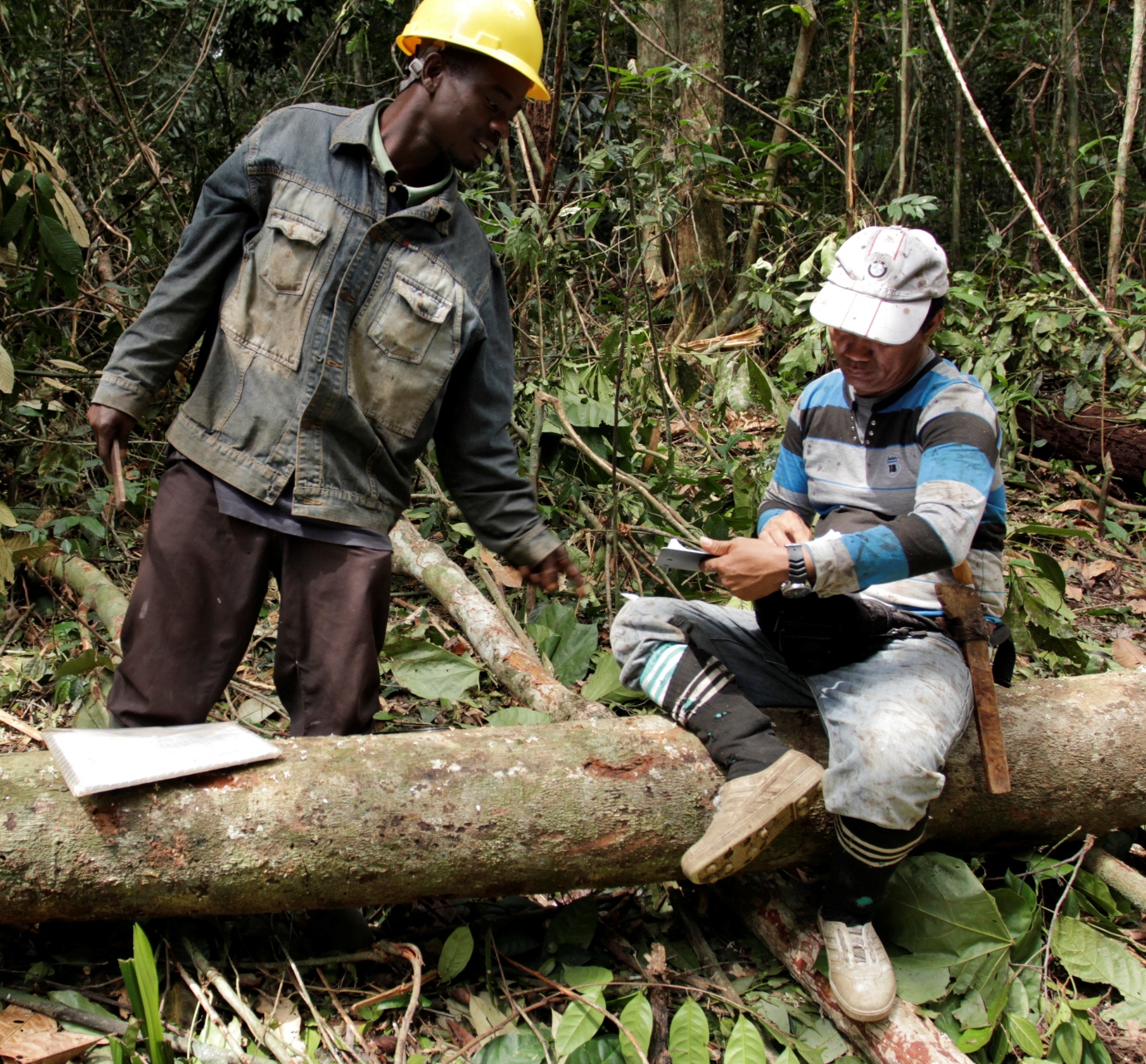
Share
Related Links
Understanding Long-Term Impacts in the Forest Sector: Predictive Proxy Indicators
A Crystal Ball for Forests: Using Today’s Indicators to Predict Tomorrow’s Impacts
Improving the Forests Database to Support Sustainable Forest Management
Assessing and Monitoring Forest Governance
Developing Guidance on Forest Governance Data Collection for Assessment and Monitoring
Impact Analysis of Forest Governance Interventions
Poverty-Forests Linkages Toolkit
Keywords
Biodiversity, climate change, forests, Impact, indicators, poverty, predictive proxies
Authors/Partners
The World Bank, PROFOR
Developing Proxy Indicators to Assess Forests Sector Impacts
CHALLENGE
The international development community is increasingly demanding better evidence regarding the effectiveness of policies and programs across different sectors, and the forest sector is no exception. Governments and donor agencies explicitly seek to link investment to proven impact. Yet, the evidence base necessary to inform policies and programs in the sector that can successfully enhance the livelihoods of forest-dependent poor populations, foster economic growth, reduce emissions from deforestation and degradation, and conserve forest biodiversity remains weak. There is a particular need to identify robust, yet practical, indicators to track and assess the impacts of forest-related investments.
Any attempt to identify such indicators must grapple with two particular challenges in the forest sector. First, forest-related interventions are usually complex, with forestry policies, programs and projects often including multiple objectives, requiring the integration of socioeconomic and ecological expertise, and entailing processes that unfold over different spatial scales. Second, such interventions often take a long time to show results. For example, the results of investments in thinning, tree stand improvement or natural regeneration under sustainable forest management are unlikely to be evident for 10 to 30 years. These characteristics make attribution of impacts to specific interventions (as opposed to other potential factors) especially difficult within the forest sector.
APPROACH
This activity will build from the extensive evidence accumulated within the World Bank’s forests portfolio, PROFOR activities and other relevant donor-supported initiatives to address these challenges and develop guidance on the identification and use of proxy indicators for project impacts. In so doing, the Activity seeks to increase understanding among policymakers, practitioners and applied researchers of the potential short-term proxy indicators for longer-term impacts of forest sector investments and how they may be used in practice.
The Activity began by undertaking an inventory of indicators used by key actors in the sector and reviewing the available literature on proxy indicators (sometimes referred to as “lead” or “predictive” indicators). An in-depth review of the World Bank portfolio of forest operations under the current Forests Strategy (2002-present) and a relevant subset of the PROFOR portfolio lies at the heart of this Activity. Results will provide the core evidence base for a report on predictive proxy indicators (PPIs) and the conditions in which they are likely to be valid. Through this review, the activity will also analyze potential constraints to the use of indicators in donor-supported forest interventions and suggest ways these constraints might be addressed.
RESULTS
The Working Paper "Understanding Long-Term Impacts in the Forest Sector: Predictive Proxy Indicators" is now available (download at left). The main overall finding is that predictive proxy indicators do appear to exist and can be used in practice. Given the complexity and diversity of the forest sector and novelty of the task, this conclusion was far from a certainty when this research began. The authors identified a range of potential PPIs, several of which have already been used in World Bank forest projects. These PPIs focused primarily at the Project Development Objective (PDO) and Global Environment Objective level, although some intermediate-level indicators were identified.
The report argues that robust PPIs can provide an important ex-ante evaluation tool that enables practitioners and researchers to predict future outcomes and longer-term impacts if certain assumptions hold. To help inform the design and implementation of forestry operations and knowledge, we developed a list of top ranking indicators based on an assessment of their predictive potential and their SMART score. These indicators are presented in an indicator menu organized by major objective (that is, relating to poverty, biodiversity, climate, or governance) and including brief notes on how they might be used. The indicator menu is presented as an annex and represents a key product stemming from this analytical work.
This review did not identify any standalone “silver bullet” predictive proxies, but a major contribution is the idea that multiple indicators, considered together, can have strong predictive potential. The report describes a series of seven indicator clusters that form PPIs.
PPIs are already being integrated into new World Bank projects, such as the Argentina Forests and Community Project. This initiative aims to increase access to markets and basic services by small forest producers, including indigenous people and campesinos, in Argentina’s comparatively poor but forest-rich Northern provinces. Activities will focus on helping communities to develop Sustainable Forest Management (SFM) plans and to strengthen their tenure. To assess effectiveness, the project team will collect data on the three indicators under the Sustainable Forest-Related Income PPI. The project will also be assessed using rigorous impact evaluation methods, making it the first forward-looking test case of how well the forestry PPIs perform as predictors of future outcomes.
For stories and updates on related activities, follow us on twitter and facebook , or subscribe to our mailing list for regular updates.
Author : The World Bank, PROFOR
Last Updated : 06-15-2024








